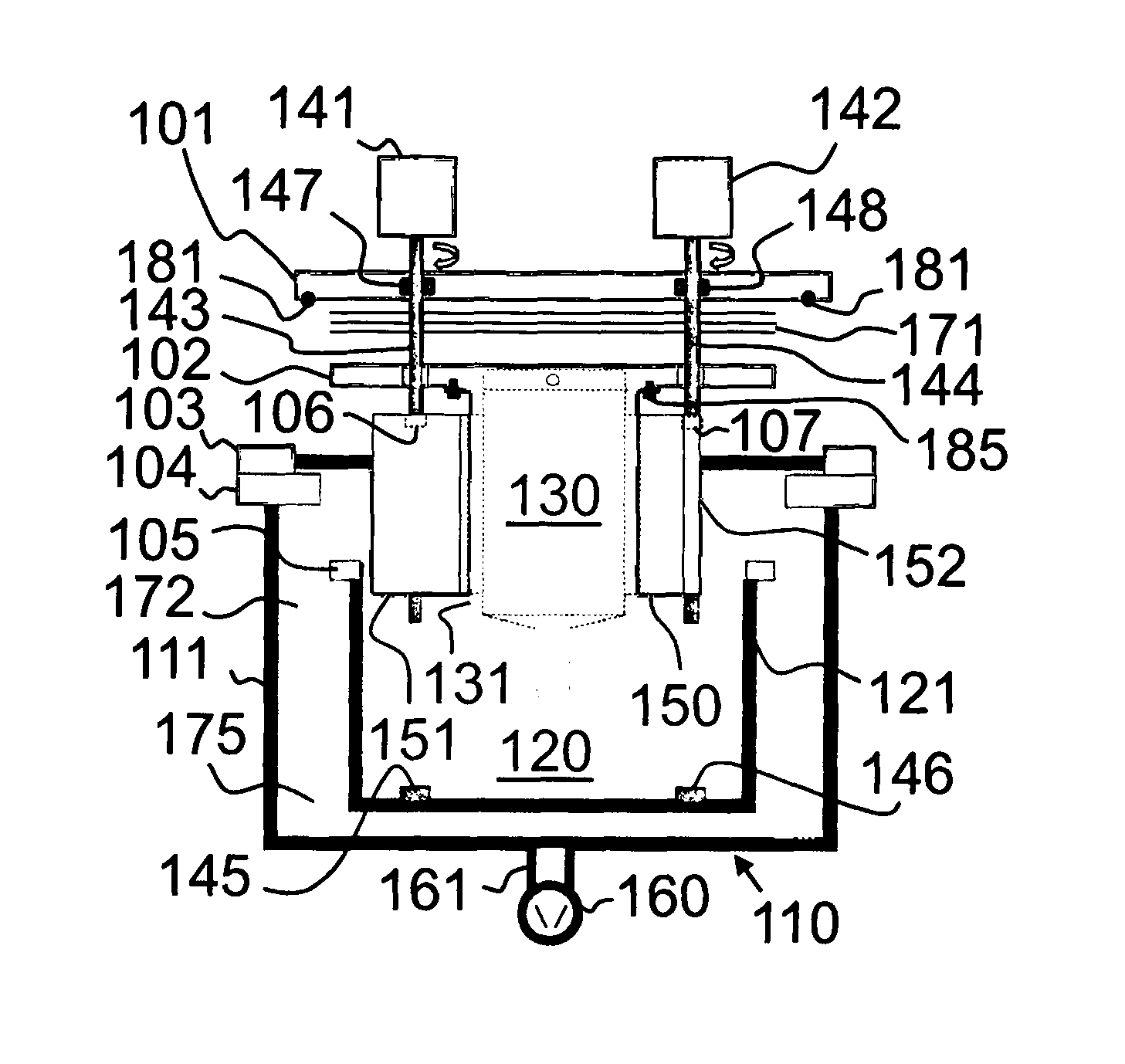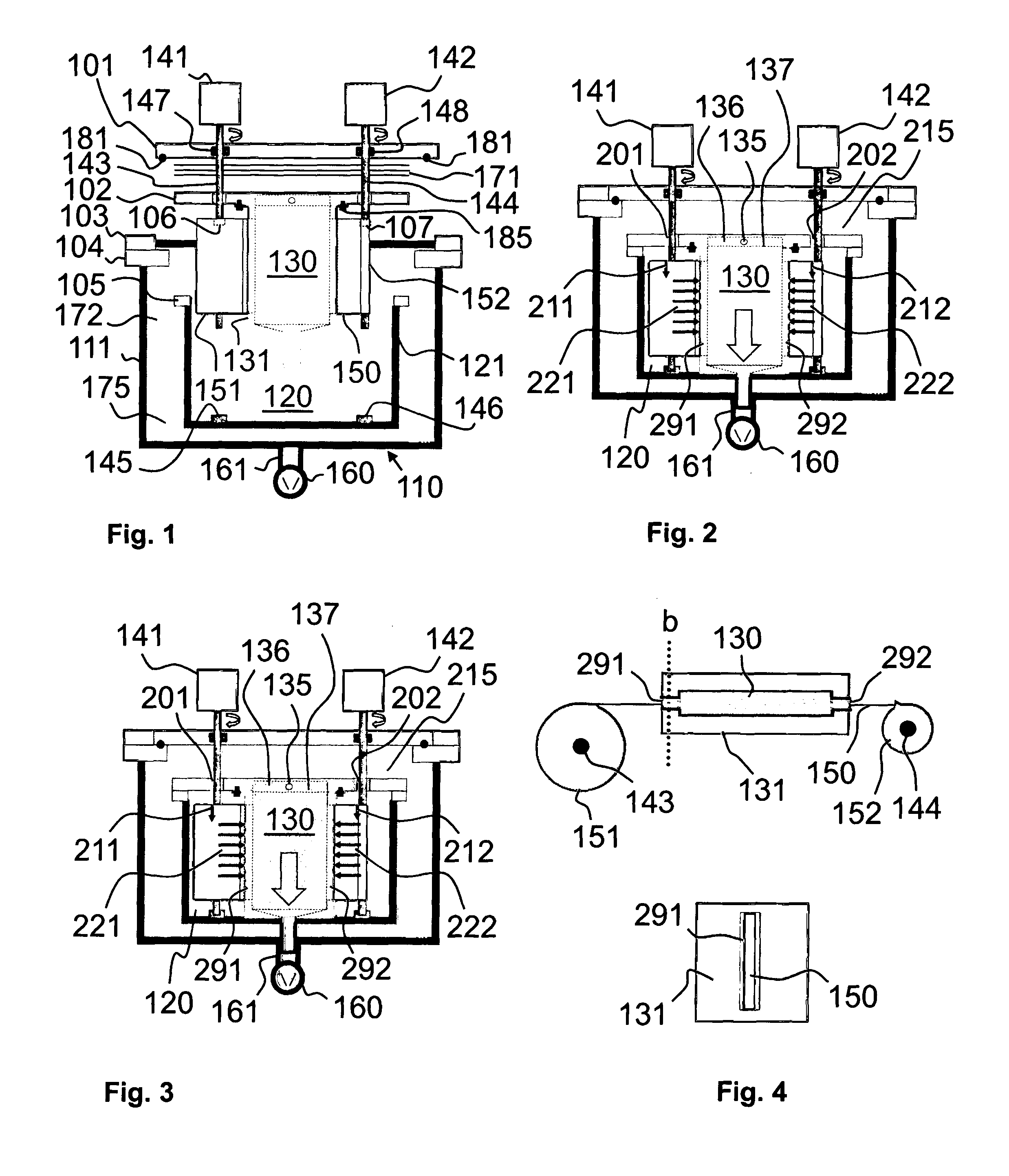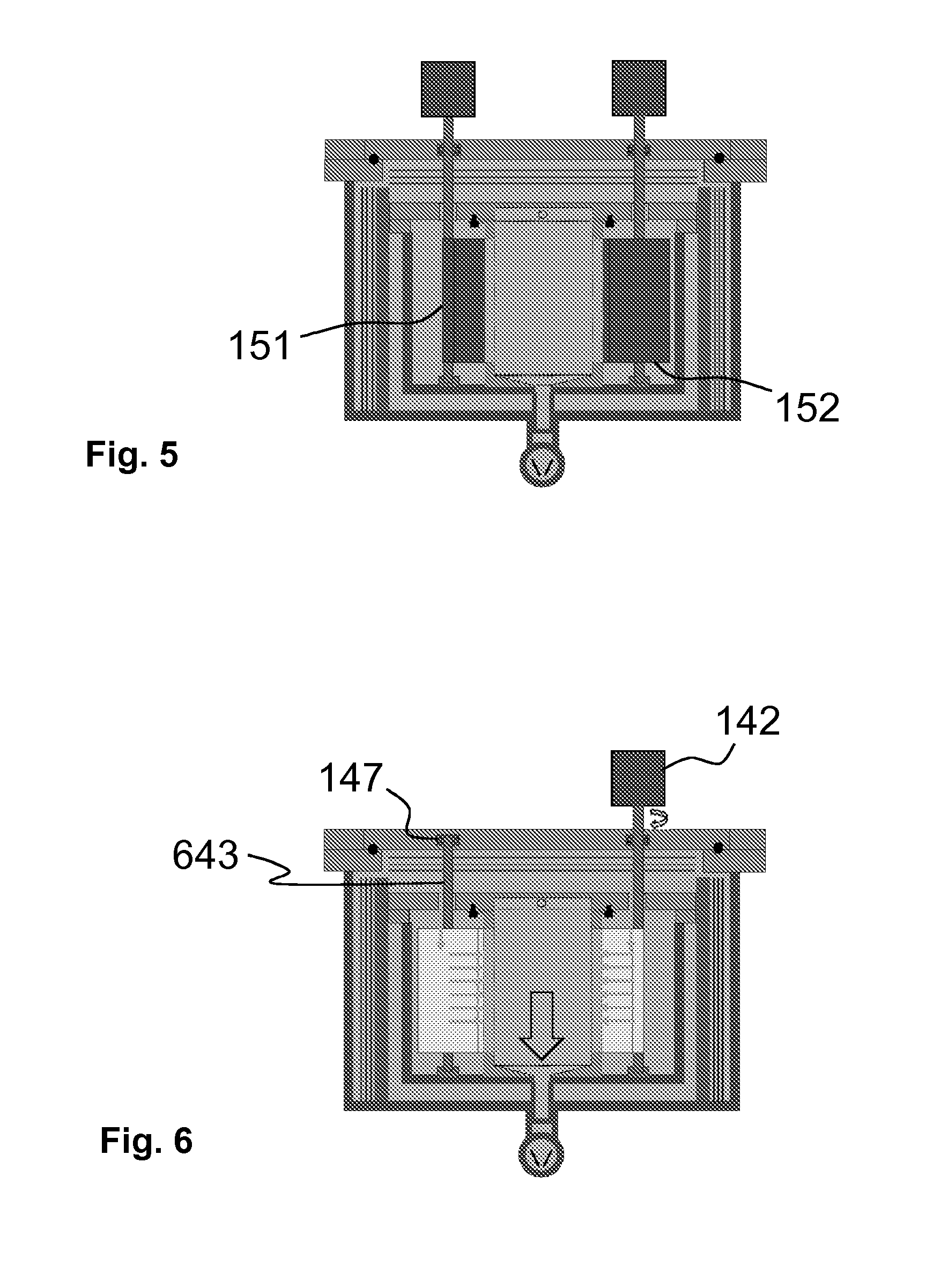Coating a substrate web by atomic layer deposition
a technology of atomic layer deposition and substrate, which is applied in the direction of chemical vapor deposition coating, coating, metal material coating process, etc., can solve the problem of 1% non-uniformity over the substrate wafer
- Summary
- Abstract
- Description
- Claims
- Application Information
AI Technical Summary
Benefits of technology
Problems solved by technology
Method used
Image
Examples
Embodiment Construction
[0096]In the following description, Atomic Layer Deposition (ALD) technology is used as an example. The basics of an ALD growth mechanism are known to a skilled person. As mentioned in the introductory portion of this patent application, ALD is a special chemical deposition method based on the sequential introduction of at least two reactive precursor species to at least one substrate. The substrate, or the moving substrate web in this case, is located within a reaction space. The reaction space is typically heated. The basic growth mechanism of ALD relies on the bond strength differences between chemical adsorption (chemisorption) and physical adsorption (physisorption). ALD utilizes chemisorption and eliminates physisorption during the deposition process. During chemisorption a strong chemical bond is formed between atom(s) of a solid phase surface and a molecule that is arriving from the gas phase. Bonding by physisorption is much weaker because only van der Waals forces are invo...
PUM
| Property | Measurement | Unit |
|---|---|---|
| Thickness | aaaaa | aaaaa |
| Pressure | aaaaa | aaaaa |
| Flow rate | aaaaa | aaaaa |
Abstract
Description
Claims
Application Information
 Login to View More
Login to View More - R&D
- Intellectual Property
- Life Sciences
- Materials
- Tech Scout
- Unparalleled Data Quality
- Higher Quality Content
- 60% Fewer Hallucinations
Browse by: Latest US Patents, China's latest patents, Technical Efficacy Thesaurus, Application Domain, Technology Topic, Popular Technical Reports.
© 2025 PatSnap. All rights reserved.Legal|Privacy policy|Modern Slavery Act Transparency Statement|Sitemap|About US| Contact US: help@patsnap.com



